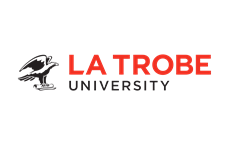Stakeholder consensus for decision making in eye-gaze control technology for children, adolescents and adults with cerebral palsy service provision: findings from a Delphi study
- Published
- Thursday, December 3, 2020 - 12:00 PM
The study was completed by the Eyes on Communication Research Team and Advisory Group which includes members of CP-Achieve: Dr Margaret Wallen from ACU and Dr Petra Karlsson from Cerebral Palsy Alliance Research Institute. The Research Team also includes René Pereksles, mother of an adolescent using eye-gaze control technology. The Advisory Group included people with cerebral palsy and their communication partners and a range of health professionals.
Download the Clinical Guidelines HERE.
Stakeholder consensus for decision making in eye-gaze control technology for children, adolescents and adults with cerebral palsy service provision: Findings from a Delphi study
Researchers: Petra Karlsson, Tom Griffiths, Michael T. Clarke, Elegast Monbaliu, Kate Himmelmann, Saranda Bekteshi, Abigail Allsop, René Pereksles, Claire Galea and Margaret Wallen
Eye-gaze control technology can be used by people with significant physical disability to access a speech generating device and a computer for communication, leisure, work, socialising and controlling the environment. Eye-gaze control technology is usually used when other options for communication don’t work well. An infra-red camera on the computer monitors eye movements and eye-gaze. Eye movements can then be used to make on-screen selections. This technology is complex to set up, needs practice to learn, and education to make sure that the technology adapts to the user’s needs. The Eyes on Communication Team wanted to develop Clinical Guidelines so that the best information was available to all people with cerebral palsy, their families and support networks around the world.
Aim of the study. This study aimed to find out what experts around the world thought were the important issues and advice to include in Clinical Guidelines. Experts are people who know about and use eye-gaze control technology: people with cerebral palsy and their families and others who work in the field such as occupational therapists and speech pathologists, medical practitioners, educators, researchers, suppliers and engineers.
How the study was carried out. A Delphi study, which had three rounds of surveys, was used to work out what the experts thought was most important to include in Clinical Guidelines.
In Round 1, the Eyes of Communication Research Team and Advisory Group wrote 17 questions to find out what experts thought. The questions were sent out in an online survey. The answers were summarised into 200 issues that the experts thought were important to include in Clinical Guidelines.
In Round 2, these 200 statements were sent out in another online survey. Experts were asked to rate how important each issue was to include in the Clinical Guidelines. One hundred and five were considered important.
In Round 3, these 105 statements were sent out for last time. Experts were asked again to rate how important these were for inclusion in the Clinical Guidelines.
After Round 3, the experts agreed that 94 issues were considered very important to include in the Clinical Guidelines. These 94 issues fit under eight different areas which have become the core of the Clinical Guidelines.
The Clinical Guidelines. The eight areas were:
- Unique features to consider as part of deciding to use eye-gaze control technology.
- Information to include as part of an assessment before trialling eye-gaze control technology.
- Factors to consider when carrying out a trial of eye-gaze control technology.
- Ways of supporting a person and their support network to learn to use eye-gaze control technology.
- Factors to consider when reviewing the use eye-gaze control technology to make sure it meets the ongoing needs of a person using the technology.
- Recommendations for measuring whether eye-gaze control technology is working and meeting the goals of the user and their communication partners.
- Suggestions for completing funding applications to purchase eye-gaze control technology.
- Preparing for future use of the technology when it is currently not the right choice.
The Clinical Guidelines are now freely available HERE.
Relevance to CP-Achieve. One of the aims of CP-Achieve is to improve the participation of adolescents and young people with cerebral palsy in life situations which are important to them. The aim of the Clinical Guidelines is to enable more people with cerebral palsy and significant physical disability and communication difficulties to effectively use eye-gaze control technology to communicate what is important to them, to make choices and decisions, and to interact socially. More effective access to a computer will enable use of social media, involvement in education and work, options for finding and engaging in leisure and social interaction. In short, the access to life situations that use of eye-gaze control technology may provide could be life-changing.
Full reference and link to the full article:
Karlsson, P., Griffiths, T., Clarke, M. T., Monbaliu, E., Himmelmann, K., Bekteshi, S., Allsop, A., Pereksles, R., Galea, C., & Wallen, M. (2021). Stakeholder consensus for decision making in eye-gaze control technology for children, adolescents and adults with cerebral palsy service provision: Findings from a Delphi study. BMC Neurology, 21(1), 63. https://doi.org/10.1186/s12883-021-02077-z













